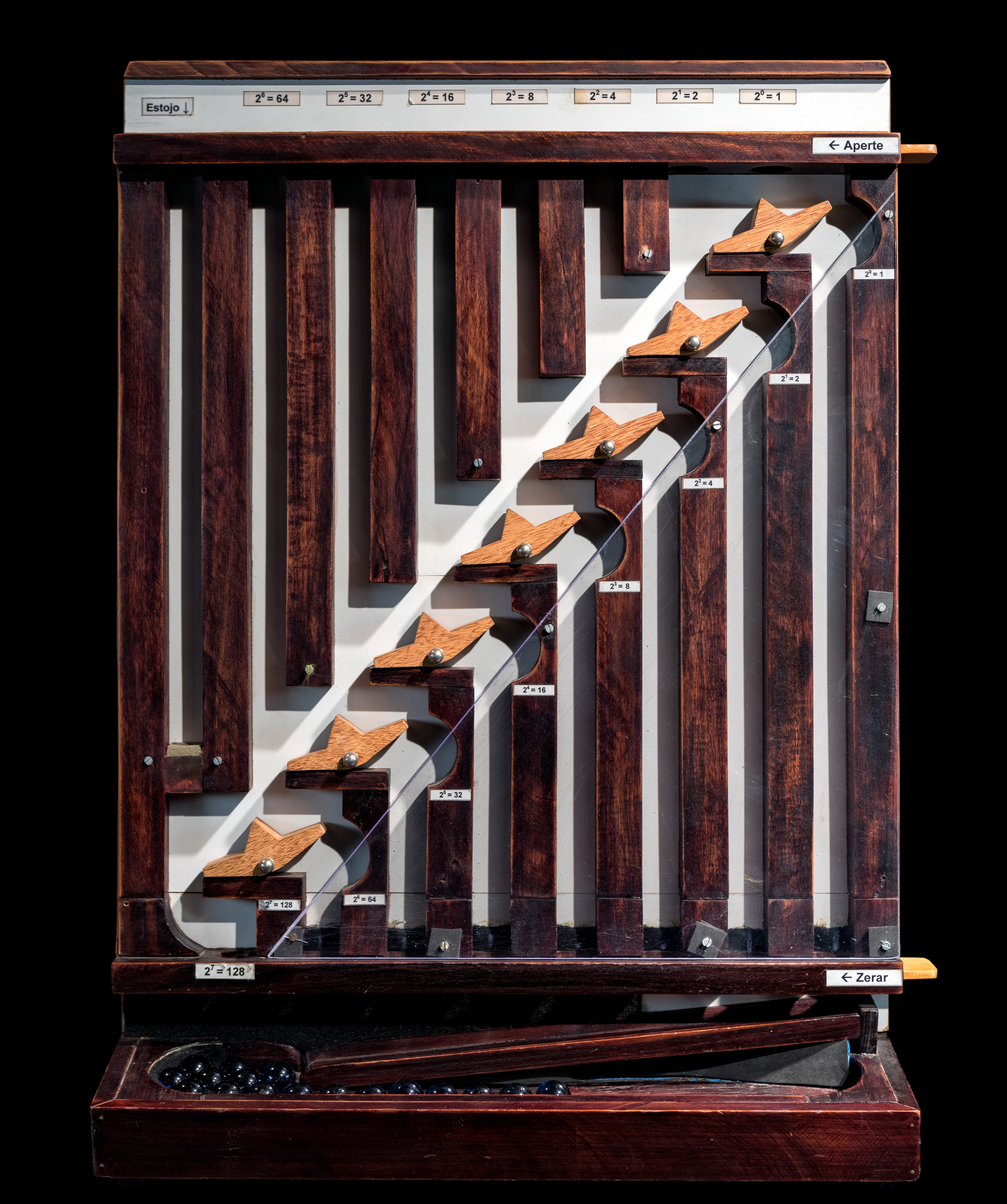ADDING MACHINE
We are used to writing numbers in base 10, because this system was what prevailed in our culture (and because there are ten fingers). When we see 109 we think of “1 hundred plus 0 tens plus 9 ones”.
From a certain point of view, it would be more economical to use base 2, since only two digits are needed: 0 and 1. In this case, the positional notation is based on powers of 2. For example, the representation of 109 in base 2 is 1101101: 109 = 1×64 + 1×32 + 0×16 + 1×8 + 1×4 + 0×2 + 1×1.
Adding two numbers in base 2 is similar to adding in base 10: the addition is done from right to left, noting that in each column 0+0 is 0, 1+0 is 1, 0+1 is 1, 1 +1 results in 0 and “goes 1”, 1+1+1 results in 1 and “goes 1”.
This machine performs exactly that algorithm.

HOW TO ENTER A NUMBER?
Let's say you want to put 23. The biggest power of 2 that fits in 23 is 16: put a marble in 16. For 23,
there's 7: it doesn't fit 8, but it fits the 4. Put a marble in 4. There are 3 left: it fits the 2. Put a marble
in 2. Missing 1, put a marble in 1.
HOW TO READ THE RESULT?
Add the powers of 2 of the positions where a ball was.
If you want to see a little more about this machine, check out the video below! Seize the opportunity to check out the other cool videos on the Matemateca's channel!
